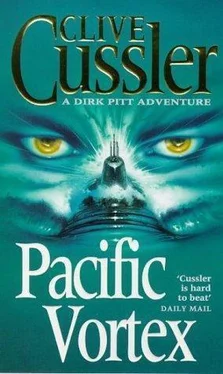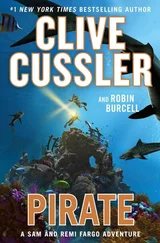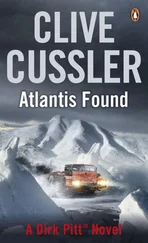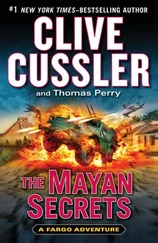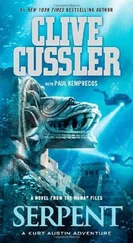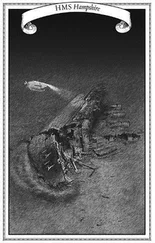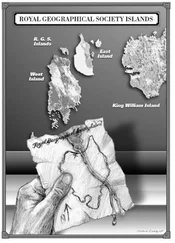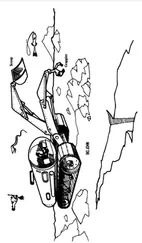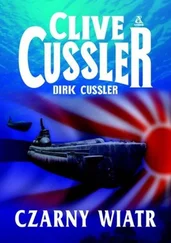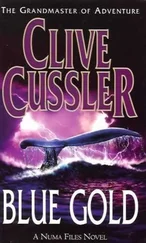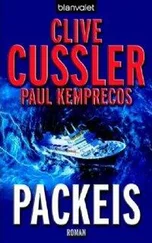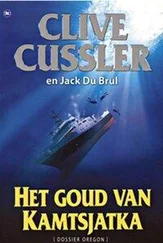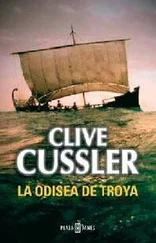They had discovered their first victim of the Pacific Vortex.
Boland was the first to react He snatched the mike from its cradle. «Radio room. This is Boland. Open maritime frequency. Send message code sixteen.»
Pitt said: «A little premature concerning the bearing failure, aren't you? We haven't found the Starbuck yet.»
«True,» Boland admitted briefly. «I'm jumping the gun but I want Admiral Hunter to know exactly where we are, just in case.»
«Expecting trouble?»
«No sense in taking chances.»
«Next contact, bearing two hundred eighty-seven degrees,» the sonar operator droned conversationally.
They returned and waited at the monitors until the sloping deck of a steamer came into view, the stern rising high while the bows were lost in the blue green depths. The camera sled passed over a massive round smokestack and they were able to peer down into its black interior. The middle of the ship was laced with valves and piping, and carried no superstructure, but the stern section rose several decks, sprouting an ugly maze of ventilation tubes. Growth had claimed all the metal parts and even the cables trailing off the masts. Exotically hued fish of every variety were swimming among the rigging, as though the skeleton of the dead ship was their own personal playground.
Boland's voice repeated the precise figures on the computer display.
Japanese oil tanker, Ishiyo Maru, 8,106 tons, reported missing with all hands, September 14, 1964.
«God,» Stanley murmured. «This place is a veritable cemetery. I'm beginning to feel like a damned grave digger.»
The roll call of the decayed and lifeless ships was repeated six more times in the next hour. Four merchantmen, a large schooner, and an ocean-going trawler were located and identified. The tenseness in the detection room heightened as each new find was scanned and analyzed. And when the final moment came, the moment they had geared their conscious minds for, it curiously caught them all by surprise.
The sonar operator suddenly pressed his earphones tighter against his ears and fixed an intense, unbelieving stare at his instrument panel. «I have a contact with a submarine bearing one hundred ninety degrees,» he said.
«Certain?» Boland demanded.
«Bet my dear mother's virtue on it. I've read subs before, Commander, and this is a big one.»
Boland hit the mike. «Bridge? When I give the word, stop all engines and drop anchor. Fasti Get that?»
«Affirmative, sir,» came the rough-edged voice over the speaker.
«What is the depth?» Pitt asked.
Boland nodded. «Depth?» he ordered.
«Ninety feet.»
Pitt and Boland stared at one another. «Compounds the mystery, wouldn't you say?» Pitt asked quietly.
«That it does,» Boland answered softly. «If Dupree's message was fake, why include the correct depth level?»
«Our mastermind probably reasoned that nobody in their right mind would believe a reading of ninety feet. I'm seeing it with my own two eyes and I still don't believe it.»
«She's coming into camera range.» Stanley announced. «There. there, we have a submarine.»
They stared at the image of a massive black shape lying below the slow-moving keel of the Martha Ann. To Pitt it was like looking down at a model ship in a bathtub. Her length was at least twice that of the conventional nuclear submarine. Instead of the more familiar hemispherical bows, her fore end was formed with a more pointed design. The usual perfect cigar shape was also missing and had been replaced with a hull that tapered smoothly into a classic swept-back symmetry. Gone too was the great dorsal finlike conning tower of other submarines. In its place sat a smaller rounded hump. Only the control planes on the stern remained the same, as did two bronze propellers rucked neatly under the sleek hull. The submarine looked comfortably serene, like some huge Mesozoic denizen on a late afternoon nap. It was not the way it should have looked, and Pitt could feel his skin start to gooseflesh.
«Away marker,» Boland snapped.
«Marker?» Pitt questioned.
«A low frequency electronic beeper,» Boland answered. «In case we're forced to leave the area, we have a waterproof transmitter sitting on the seabed giving out periodic signals. That way we can pinpoint the position without a search when we return.»
«Our bows have just cleared the wreck, Commander.» This from the sonar operator.
Boland bellowed into the intercom mike. «All engines stop. Away anchor.» He swung and faced Pitt. «Did you get a look at its number?»
«Nine-eight-nine,» Pitt said tersely.
«That's her, the Starbuck,» Boland said reverently. «I never really thought Td lay eyes on her.»
«Or what's left of her,» Stanley added, his face suddenly pale. «Just thinking about those poor bastards entombed down there is enough to make your skin crawl.»
«It does give you a queer feeling deep down in your gut,» Boland agreed.
«Your gut feeling isn't the only thing that's queer,» Pitt said evenly. «Take a closer look.»
The Martha Ann was pivoting around the anchor now, and her stern, urged by the diminishing momentum, slowly swung on an arc away from the sunken submarine. Boland waited a moment until the TV cameras were angled to keep the Starbuck in viewing range. When the subject centered in the middle of the frame, the lenses locked in place and automatically zoomed in for closer inspection.
«She's lying there in the bottom sand as real and tangible as she can be,» Boland murmured slowly as he gazed into the screens. «The bow isn't buried as suggested by Dupree's report. But other than that, I see nothing unusual.»
Pitt said: «A Sherlock Holmes you ain't. Nothing unusual you say?»
«No damage is evident on the bows,» Boland said slowly. «But she could have been holed beneath the hull which won't show until she's raised. Nothing odd about that.»
«It takes a pretty fair explosion to make a hole big enough to sink a ship the size of the Starbuck in only ninety feet of water,» Pitt said. «At a thousand feet in depth, a hairline crack would do it. But on the surface, she could handle anything less than a large gash. Add to that, an explosion would leave debris scattered around; nothing detonates cleanly without leaving a mess. As you can see, there isn't so much as a rivet lying in the sand. Which brings us to the next startling conclusion. Where in hell did tibe sand come from? We roamed miles of this seamount and saw nothing except jagged rocks and vegetation. Yet there sits your submarine in the neatest little sand patch you ever saw.»
«Could be a coincidence,» Boland persisted quietly.
«That Dupree laid his dying submarine on the only soft landing spot within miles? Extremely doubtful. Now we come to the tough one. An observation that can't be so easily explained.» Pitt leaned closer to the monitor screens. «The remains of sunken ships are most instructive. To a marine biologist they're the perfeet laboratory. If the date of the ship's demise is recorded, it's possible for the scientist to establish the growth rate of different types of sealife on the wreck. Please note that the exterior hull of the Starbuck is as clean and scrubbed as the day she was launched.»
Every man in the detection room turned again from his instruments and peered at the monitors. Boland and Stanley just stood there and peered at Pitt. They didn't have to study the monitors to know he was right.
«It would seem,» Pitt said, «at least from outward appearances, that the Starbuck sank no more than yesterday.»
Boland wearily rubbed a hand across his forehead. «Let's go topside,» he said, «and discuss this in the fresh air.»
Upon the port wing of the bridge Boland turned and gazed out over the sea. Another two hours and it would be sunset and already the blue of the water was beginning to darken as the sun struck the waves on an oblique angle. He was tired, and his words when he spoke, were low and spaced apart.
Читать дальше
